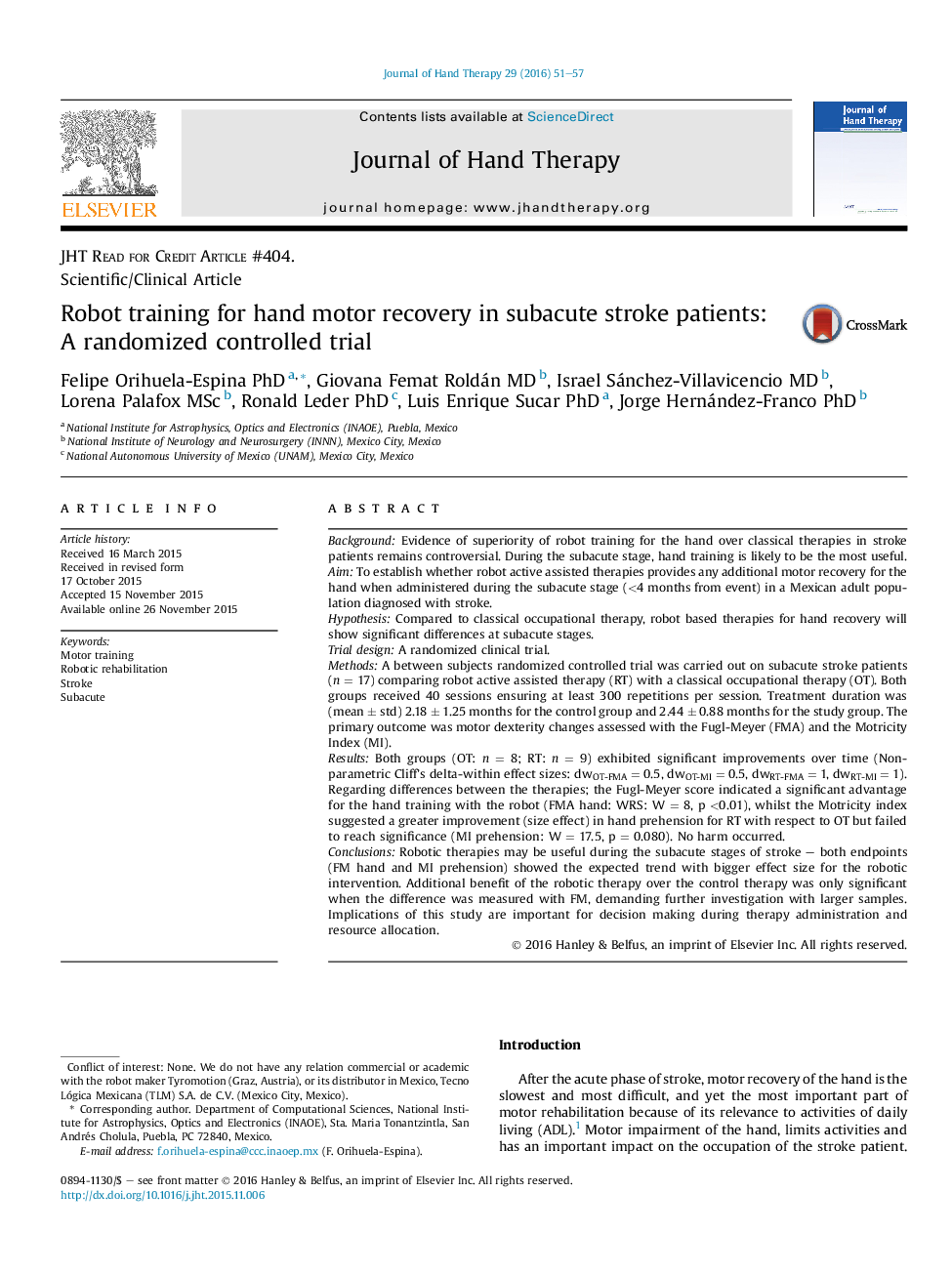| کد مقاله | کد نشریه | سال انتشار | مقاله انگلیسی | نسخه تمام متن |
|---|---|---|---|---|
| 2698100 | 1143942 | 2016 | 7 صفحه PDF | دانلود رایگان |
BackgroundEvidence of superiority of robot training for the hand over classical therapies in stroke patients remains controversial. During the subacute stage, hand training is likely to be the most useful.AimTo establish whether robot active assisted therapies provides any additional motor recovery for the hand when administered during the subacute stage (<4 months from event) in a Mexican adult population diagnosed with stroke.HypothesisCompared to classical occupational therapy, robot based therapies for hand recovery will show significant differences at subacute stages.Trial designA randomized clinical trial.MethodsA between subjects randomized controlled trial was carried out on subacute stroke patients (n = 17) comparing robot active assisted therapy (RT) with a classical occupational therapy (OT). Both groups received 40 sessions ensuring at least 300 repetitions per session. Treatment duration was (mean ± std) 2.18 ± 1.25 months for the control group and 2.44 ± 0.88 months for the study group. The primary outcome was motor dexterity changes assessed with the Fugl-Meyer (FMA) and the Motricity Index (MI).ResultsBoth groups (OT: n = 8; RT: n = 9) exhibited significant improvements over time (Non-parametric Cliff's delta-within effect sizes: dwOT-FMA = 0.5, dwOT-MI = 0.5, dwRT-FMA = 1, dwRT-MI = 1). Regarding differences between the therapies; the Fugl-Meyer score indicated a significant advantage for the hand training with the robot (FMA hand: WRS: W = 8, p <0.01), whilst the Motricity index suggested a greater improvement (size effect) in hand prehension for RT with respect to OT but failed to reach significance (MI prehension: W = 17.5, p = 0.080). No harm occurred.ConclusionsRobotic therapies may be useful during the subacute stages of stroke – both endpoints (FM hand and MI prehension) showed the expected trend with bigger effect size for the robotic intervention. Additional benefit of the robotic therapy over the control therapy was only significant when the difference was measured with FM, demanding further investigation with larger samples. Implications of this study are important for decision making during therapy administration and resource allocation.
Journal: Journal of Hand Therapy - Volume 29, Issue 1, January–March 2016, Pages 51–57
